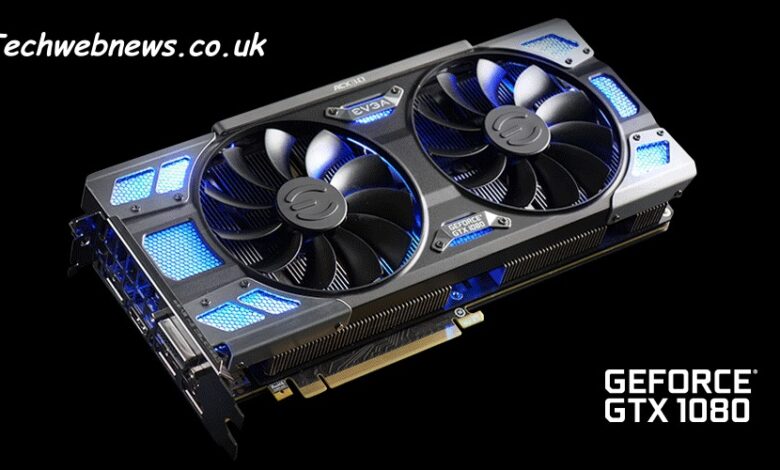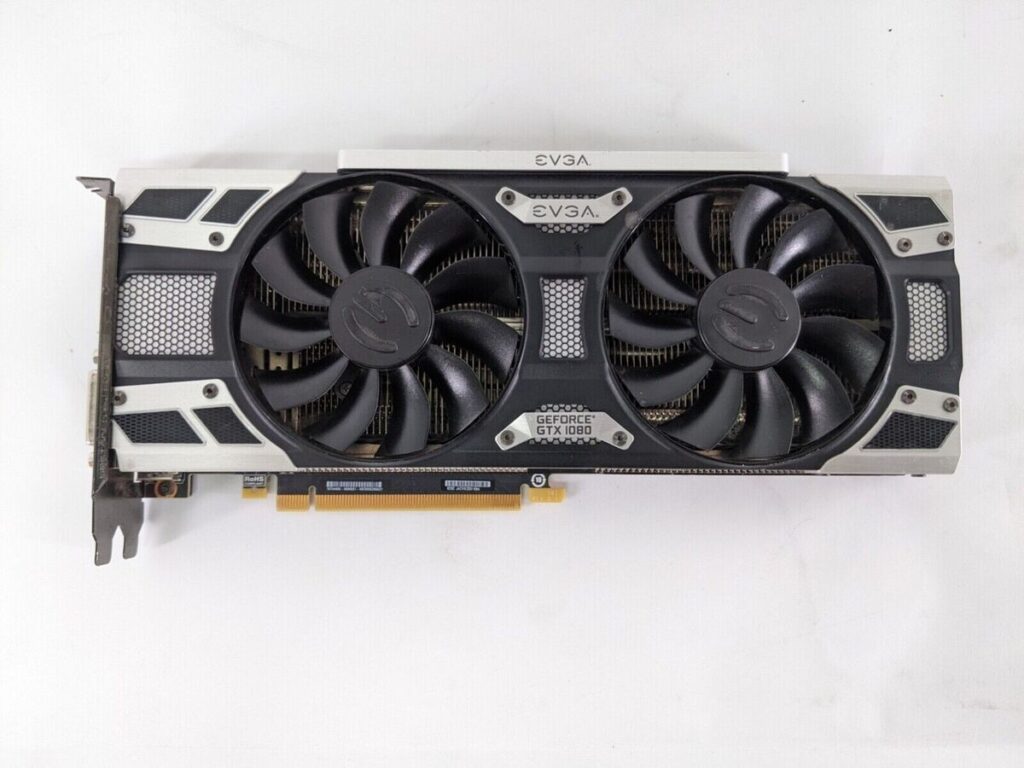EVGA GTX 1080: A Classic Graphics Card That Still Holds Its Ground

When we talk about iconic graphics cards in the gaming world, the EVGA GTX 1080 almost always comes up in conversation. Released during the golden age of Nvidia’s Pascal architecture, this card represented a leap forward in performance and efficiency. For gamers, streamers, and even creative professionals, the EVGA GTX 1080 wasn’t just another piece of hardware—it was a game-changer. Even years after its launch, it still sparks debates about whether it can keep up with today’s demanding titles. Let’s dive deep into the world of this legendary GPU and see why it continues to hold a special place in the hearts of PC enthusiasts.
The Birth of a Gaming Legend
When Nvidia introduced the Pascal architecture, the gaming community knew something exciting was on the horizon. EVGA, being one of Nvidia’s most trusted partners, wasted no time creating their own versions of the EVGA GTX 1080. Known for excellent cooling solutions and reliable builds, EVGA’s take on the 1080 quickly became one of the most sought-after models on the market.
At its core, the EVGA GTX 1080 was designed to deliver high-end gaming performance without consuming a crazy amount of power. It featured 8GB of GDDR5X memory, a 256-bit memory bus, and a base clock speed that could easily be pushed higher through EVGA’s overclocking software. The result? A card that not only handled 1080p gaming like butter but also gave 1440p and even 4K players a reason to smile.
What set the EVGA models apart from the rest was the build quality. From the sturdy backplate to the efficient cooling fans, EVGA made sure their EVGA GTX 1080 variants could withstand heavy gaming sessions without overheating or throttling. This combination of performance and reliability is exactly what made the card a favorite among PC builders.
Design and Build Quality

One of the first things you notice about the EVGA GTX 1080 is its sleek and practical design. Unlike some overly flashy cards that focus too much on RGB lights, EVGA struck a balance between aesthetics and functionality. Many of their 1080 models featured a professional black-and-silver design, making it suitable for both flashy gaming rigs and minimalistic setups.
Cooling was a huge highlight. The EVGA ACX 3.0 cooling system was not just marketing fluff—it delivered real results. With dual fans and optimized airflow, the GTX 1080 could stay cool even under heavy loads. Overclockers especially appreciated this, since pushing the card beyond its base performance was smoother and safer compared to competing models.
Durability was another win. A strong metal backplate added extra rigidity, preventing sag and ensuring the card would last for years. For PC gamers who spent hundreds of hours gaming each month, knowing their GPU was built like a tank was reassuring.
Gaming Performance
When the EVGA GTX 1080 first launched, it was nothing short of revolutionary for gamers. At 1080p, you could easily crank settings to ultra in almost every AAA title and still enjoy smooth frame rates well above 60 FPS. This was also the era where 144Hz monitors were gaining popularity, and the 1080 was the perfect match for high-refresh-rate gaming.
At 1440p, the card continued to shine. Games like The Witcher 3, GTA V, and Battlefield 1 ran beautifully, offering both crisp visuals and fluid performance. Even 4K gaming, which was traditionally reserved for only the highest-end hardware, became more accessible thanks to the GTX 1080. While not every title could hit ultra settings at 60 FPS in 4K, the fact that it was even possible on a single GPU was impressive at the time.
Fast forward to today, the EVGA GTX 1080 still holds its own surprisingly well. Esports titles like CS:GO, Valorant, and Fortnite run effortlessly on this card, even pushing triple-digit frame rates. For newer AAA games, you may need to tweak settings—dropping from ultra to high or medium—but the card is still very capable, especially at 1080p and 1440p resolutions.
Overclocking and Software Support
One of EVGA’s biggest strengths is the software they provide to complement their hardware. With the EVGA Precision XOC software, gamers had an easy way to fine-tune their GTX 1080 for extra performance. Overclocking might sound intimidating to beginners, but EVGA made the process simple, safe, and surprisingly effective.
Many users were able to push their cards significantly beyond stock speeds, squeezing out extra frames in demanding titles. Paired with EVGA’s excellent cooling solutions, overclocking felt less like a risky experiment and more like an expected bonus.
This software also gave players real-time monitoring of temperatures, fan speeds, and clock speeds. For enthusiasts, this level of control made owning the GTX 1080 even more rewarding. It wasn’t just about plug-and-play—it was about getting the absolute most out of your hardware.
Creative and Professional Use
While gaming was the main focus, the EVGA GTX 1080 also appealed to creative professionals. Thanks to its CUDA cores and raw processing power, it was a solid choice for video editing, 3D rendering, and graphic design. Software like Adobe Premiere Pro and Blender could take full advantage of the card’s capabilities, cutting down rendering times and improving overall workflow efficiency.
For streamers, the GTX 1080 was a blessing. Its ability to handle demanding games while also managing streaming software meant that more creators could broadcast their gameplay without investing in dual-PC setups. At the time, this was a big step forward for content creators who wanted to share their gaming experiences online.
Longevity and Relevance Today
The EVGA GTX 1080 may not be the newest GPU on the block, but it has aged remarkably well. While it obviously can’t compete with Nvidia’s RTX 40-series cards or AMD’s latest offerings, it still provides excellent value for those on a budget or those building secondary PCs.
Its biggest limitation today is the lack of ray tracing and DLSS support, which have become standard in newer GPUs. While you can still enjoy modern titles, you won’t get to experience those cutting-edge features that dramatically improve visuals and performance. That said, if your focus is on traditional rasterized performance, the GTX 1080 continues to be a strong contender.
Even in 2025, a well-maintained EVGA GTX 1080 can run most games at 1080p and 1440p with impressive results. It might not max out every setting in the latest AAA releases, but it provides a reliable and enjoyable gaming experience that proves just how ahead of its time this card was.
Should You Still Buy One?
If you’re considering a used EVGA GTX 1080 today, the answer really depends on your needs and budget. For casual gamers or those who primarily play esports titles, it’s a great option—especially if you can find it at a reasonable price. Its performance per dollar is still respectable, and EVGA’s build quality ensures it will keep running strong.
However, if you’re someone who wants to future-proof your rig or take full advantage of modern features like ray tracing and DLSS, it might be worth saving up for something newer. The RTX 3060 or RTX 4060, for example, offer similar or better performance while also supporting modern technologies.
That said, the EVGA GTX 1080 is still one of the most iconic GPUs in gaming history, and owning one is almost like having a piece of PC hardware history.
Conclusion
The EVGA GTX 1080 wasn’t just another graphics card—it was a statement piece in the world of PC gaming. With its powerful performance, reliable cooling, and sleek design, it set new standards when it launched and has aged with remarkable grace. Even years later, it continues to offer a solid gaming experience, proving that great hardware doesn’t lose its value overnight.
For gamers who were lucky enough to own one at launch, the GTX 1080 was more than just a tool—it was a ticket to a whole new level of immersive gaming. And for those still using it today, it’s a reminder that sometimes, a classic piece of hardware can outshine the test of time.



